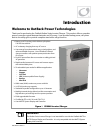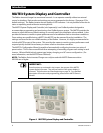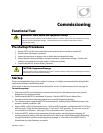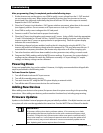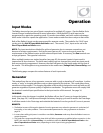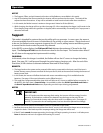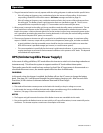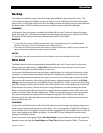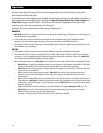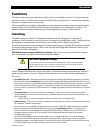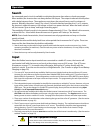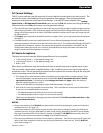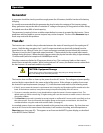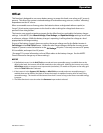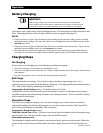
Operation
900-0020-01-00 Rev A 13
Backup
This mode is intended for systems that have utility grid available as the primary AC source. This
source will pass through the Radian inverter’s transfer circuit and will power the loads unless utility
power is lost. If utility grid power is lost, then the Radian inverter will supply energy to the loads from
the battery bank. When the utility power returns, it will be used to power the loads again.
CHARGING
:
In this mode, when the charger is enabled, the Radian will use the AC source to charge the battery
bank. (See page 20.) It will proceed through the entire battery charging cycle. After the end of the
Float timer, it will continue to alternate between Silent and Re-Float stages.
BENEFITS
:
In this mode, the inverter will offset the loads with excess renewable energy if it is available from the
batteries. (See page 19 for more information on the Offset function.)
This mode will continuously maintain the batteries in a fully-charged state, unlike the Support mode, and
does not have the overhead consumption of the UPS mode.
NOTES
:
The Support and grid-interactive functions of the Radian inverter are unavailable in this mode.
Mini Grid
The Radian inverter can be programmed to automatically reject an AC source and run solely from
battery (and renewable) energy. In
Mini Grid
mode, the inverter only connects to the AC source
(usually the utility grid) when the batteries run too low.
In this mode, the Radian inverter runs on battery-supplied power for as long as the batteries can be
sustained. It is expected that the batteries will also be charged from renewable sources such as PV.
When the batteries become depleted, the system reconnects to the utility grid to operate the loads.
The inverter will reconnect to the utility grid if the battery voltage decreases to either the
Re-Float
Voltage
set point (see page 22), or the Rebulk voltage (see page 23). Once it reconnects to the utility
grid, if the charger is turned off, the Radian will use its transfer circuit to send grid power to the loads.
If the charger is turned on, it will use the grid to charge the battery, as well as powering the loads.
While connected to the utility grid, any excess energy from the renewable source will be sent to the
loads and used to “offset” the use of grid power. When the renewable energy is equal to or greater
than the load demand, the utility grid will no longer be required. The Radian inverter will then
disconnect from the utility grid and begin running from batteries again. It will not disconnect until
these conditions are met.
CHARGING
:
In this mode, the Radian inverter will wait for the batteries to pass through the charging stages until
certain internal charger settings are met (see below). This is true regardless of whether the Radian or
the renewable source is charging. This means that the regulator for the renewable source must be set
to the same settings as the Radian (or higher). See the MATE3 Owner’s Manual to locate the exact
settings of the Radian inverter.
If the reconnection was triggered by the
Re-Float Voltage
set point, the inverter will only require the
batteries to pass through the
Float Voltage
and
Float Time
settings (as well as Offset.) The inverter



